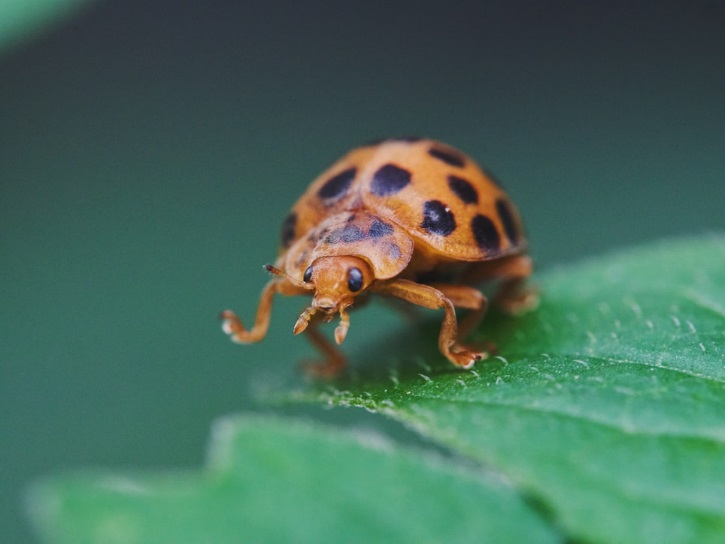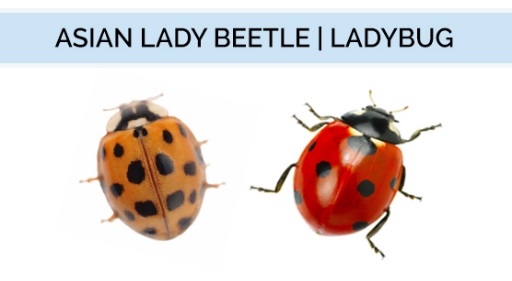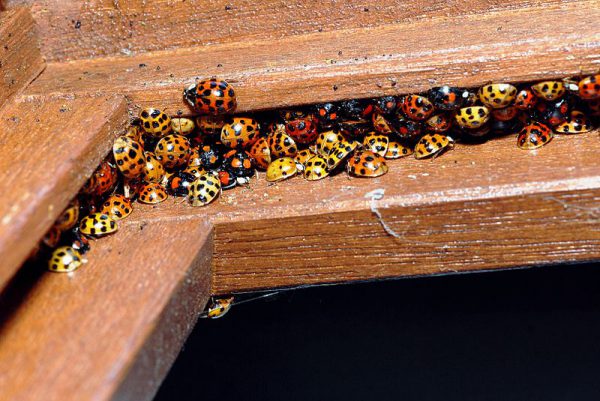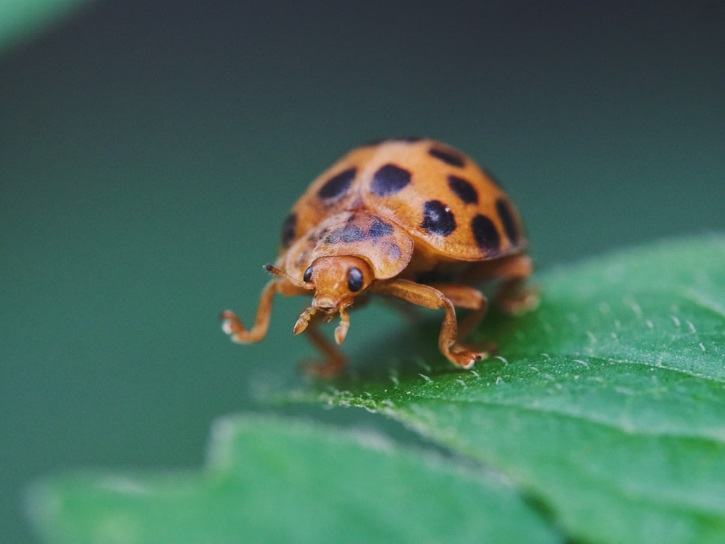
Brought to you by ARBICO Organics
This little guy is the Asian Lady Beetle (Harmonia axyridis). They are a non-native species of beetle that was introduced to our country a hundred years ago in a well-intentioned (but not well-though-out) effort to help soybean farmers control soybean aphids. They are voracious aphid-eaters, so they did that part of the job well. But they have also aggressively pushed out native species of ladybugs. These creatures, like all ladybugs and lady beetles, belong to the Coccinellidae family of insects.
While what we know as ladybugs are very recognizable in their bright red and black spotted shells, Asian Lady Beetles wear a huge variety of different colors and markings. The white marking found at the base of the head (it looks like an “M” or a “W”) can be a good way to identify these insects, but not all of them have it. Asian Lady Beetles have an orange and black color palette as opposed to the red and black of ladybugs. They can have spots, no spots, or even stripes.

Many people claim Asian Lady Beetles are aggressive and will bite. They have pincers and can bite when disturbed, but they do not attack. And their pincers are tiny, so their bite can’t really harm a person. Some people, however, do have an allergic reaction to the bite that can cause everything from cough to hives to pink eye.

Asian Lady Beetles are often said to have a noxious odor. While they do secrete a goo that has an unpleasant odor when disturbed, this behavior is common throughout the ladybug world. It’s a defense mechanism known as reflex bleeding and is meant to discourage predators. These particular excretions from Asian Lady Beetles are known to stain surfaces like walls, furniture, or fabrics. This all becomes a problem only when they begin to gather in large numbers, particularly inside structures.
As winter approaches in temperate climates, Asian Lady Beetles begin to aggregate in ever-growing clusters to keep warm and seek out winter quarters. Once the beetles have chosen a spot to overwinter, they send out a pheromone trail that attracts others to their spot. This is why hordes of insects “suddenly” appear. These scent trails can last years, meaning some homes experience invasions every year.

What’s a poor, beleaguered home-dweller to do? While the sight of large numbers of beetles in or around your home is disconcerting, they do not bother food or belongings, or breed inside a house. They are simply hibernating for the cold months, after which they’ll move on to breed and feed. You should vacuum up the ones you can, but your best bet is to take action to keep them out to begin with. During the still-warm days of fall, clear vegetation away from your house and seal it up well to keep Asian Lady Beetles and more out. There’s more in my blog on winterizing here.
It’s important to not view Asian Lady Beetles as “bad”. Yes, they are invasive, but they are here to stay and they are extremely effective at controlling pest insects on crops. Supplies of the type of ladybugs we sell (Hippodamia convergens) are dwindling rapidly. Some of this is due to invasive species, but the ones we get nest in the mountains of the West Coast and the devastating fires of the last few years have nearly wiped them out. It’s time to embrace other types of ladybugs that have the exact same eating habits. This includes not only the Asian Lady Beetles, but lesser-known native species.
Pam Couture is the Lead Content Writer at ARBICO Organics. She lives in Tucson, Arizona, where she is surrounded by family, friends and nature. ARBICO Organics can be contacted at 800.827.2847 and you can visit their website at ARBICO-Organics.com.
Related Articles & Free Email Newsletter
How To Deal With Caterpillar Pests Using Bacillus thuringiensis spp. kurstaki
What’s This Bug? The Fungus Gnat




Comment here